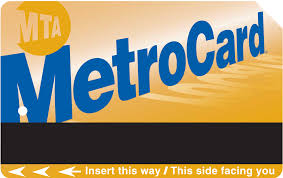I started out this assignment with my object, the MetroCard, thinking about what I wanted to ask. I started to wonder about pricing, how it’s decided upon, and how it affects the MTA commuters. I wanted to see if there was any correlation between the MTA fare and the number of users, so from there, my question formed: do changes in the MTA fares affect the number of MTA users? I researched the evolution of the of the base subway price, so the graph excludes prices like the single ride tickets, the express bus fares, the reduced fares, and the unlimited fares. I saw that there were two price increases in the past few years, one from $2.25 to 2.50 in March 2013, and then the second from $2.50 to $2.75 in March 2015. I then searched for the number of yearly MTA users. I found that from 2010-2015, the number of MTA went up from 1.6 billion to 1.7 billion. So after inputting the two sets of information into a graph and analyzing it, I could see that both the MTA fare and the number of MTA users slowly went up. I wasn’t really expecting the yearly number of people to decrease, but I did want to see if there was a change in users every time there was a change in price. So to answer my original question, changes in MTS fares don’t affect the number of users.
Who or what determines the fare price?
- Proposal from the board is sent to town hall where customers would give their input and from there it’s decided.
- Prices are also determined by zone. Zone 1 is the city and the zones go higher as you get farther from the city. So going from Zone 1 to Zone 3 is cheaper than going from Zone 1 to Zone 10.
What causes an increase in fare?
- If project management needs more money to start a new line, for construction, or for maintenance, they raise prices.
Are there concerns that if prices rise too high, then people will stop taking the trains and find another way to get where they need to go?
- She’s sure it would be a concern, but she believes that people won’t stop taking the LIRR because it’s more convenient than other options, especially for those who live in the deeper zones of Long Island, and people will always need to get to work.
Do you see prices most likely going up or down in the future?
- Yes, they’re going up next month.
What happens if the yearly number of customers start to decrease? What actions would be taken to bring the number back up?
- Ridership has actually gone up, so she didn’t know if there was a plan for such an occurrence.
I interviewed an LIRR customer service employee. LIRR employees don’t directly work with MetroCards, but I think the idea of pricing basically works the same. The woman I interviewed had a pretty good idea about how it all worked. From all the information she gave me, I arrived at the conclusion that prices only go up when necessary and they’re not very worried that people will stop using the LIRR. I think this connects back to the MetroCard because I think they work the same way; the base line being that people will always need to get where they need to go, work, home, school, etc., and the price of an MTA ride won’t stand in their way.

